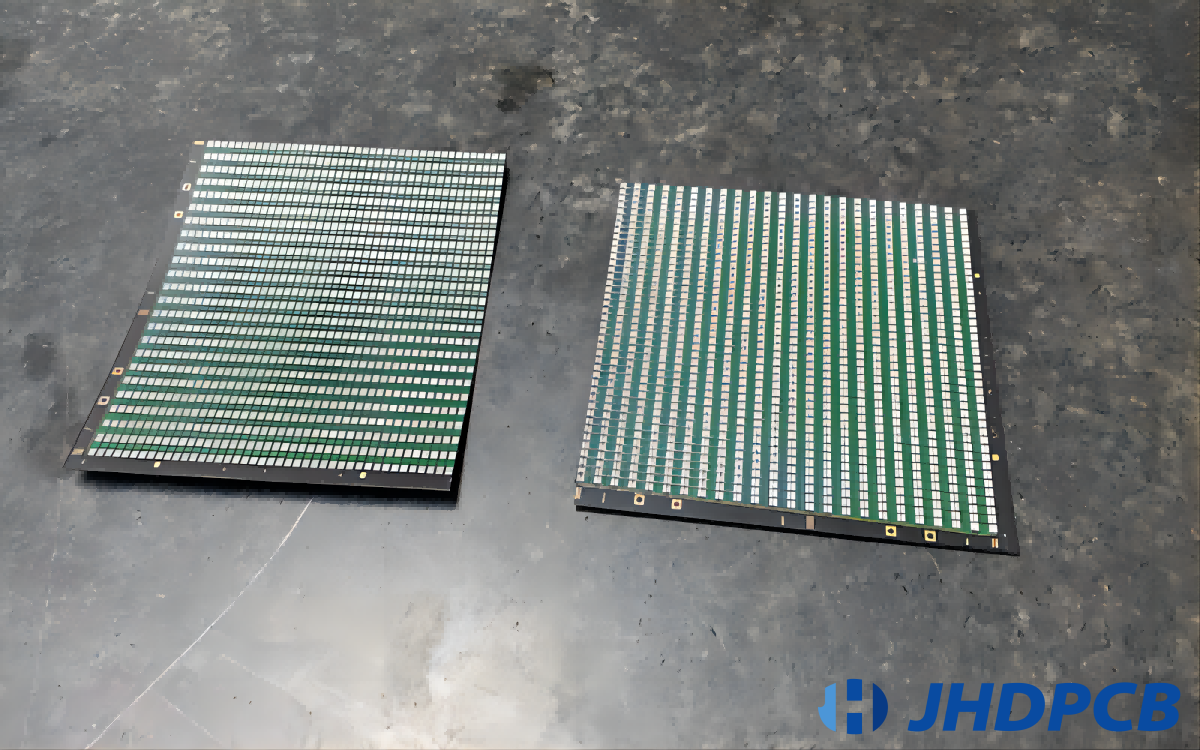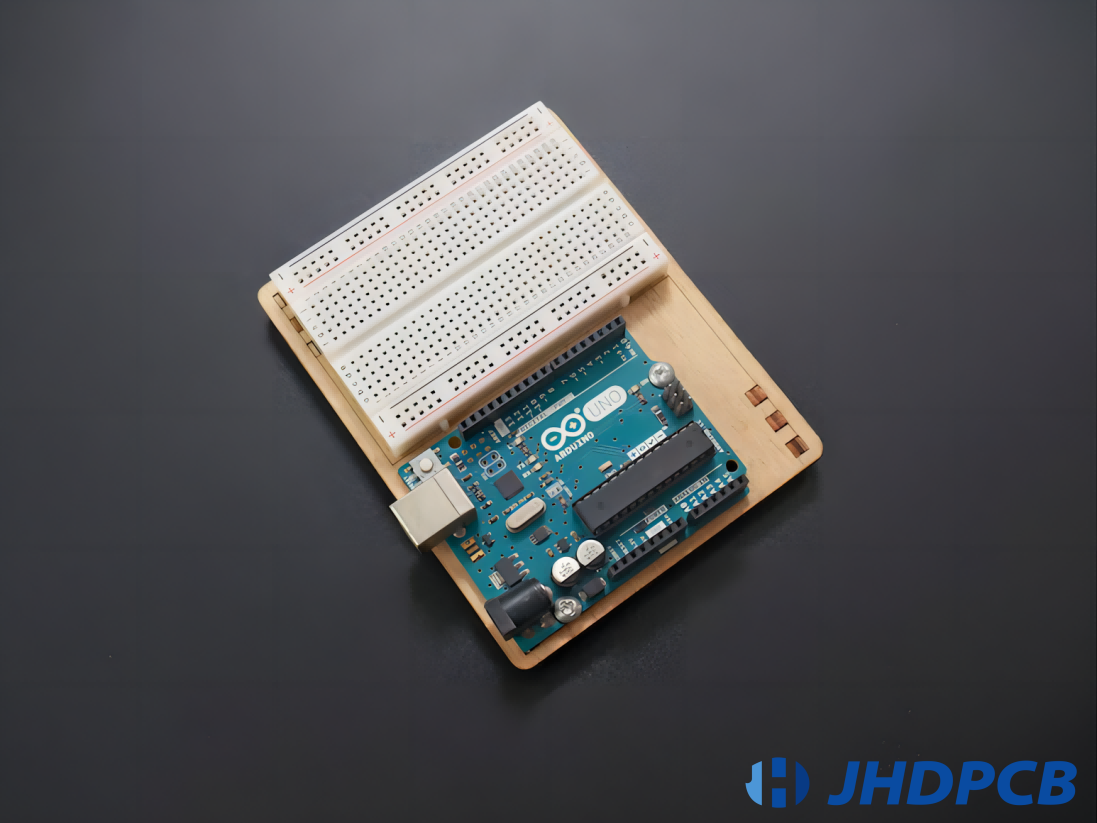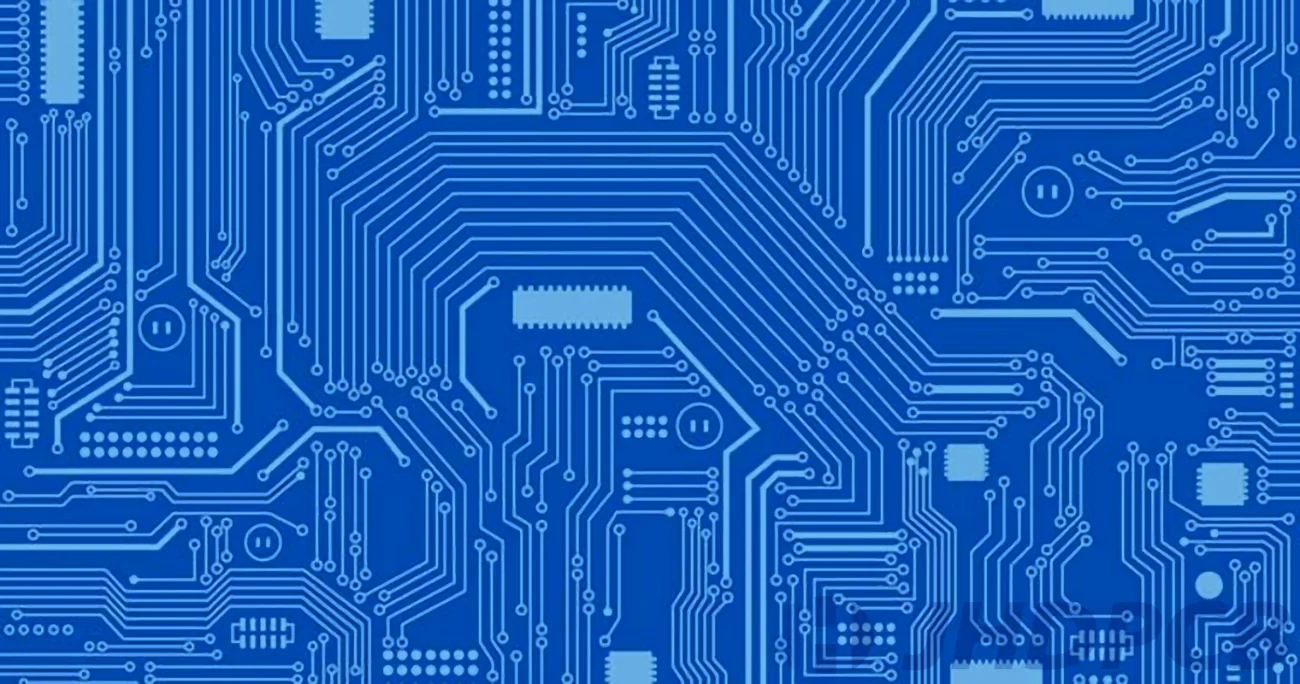Motor Driver Fundamentals: Your Guide to Efficient Motor Control
jhdpcb@gmail.com
A motor driver is an electronic circuit or device that controls the speed, direction, and torque of an electric motor. It is an essential component of many industrial and consumer applications, ranging from robotics and automation to electric vehicles and home appliances.
A motor driver typically consists of a microcontroller or a dedicated driver IC, power transistors, and protection circuitry. Motor drivers are like the superheroes of electric motors, handling crazy high voltages and currents to keep things running smoothly and safely. In this article, we’re diving into the nitty-gritty of motor drivers – the basics, the different types, and all the cool components that make them tick. Whether you are a hobbyist, a student, or a professional engineer, understanding motor drivers can help you bring your projects to life and unleash the full potential of electric motors.
What is a Motor Driver?
A motor driver is a device that acts as an interface between a motor and a controller circuit like a microcontroller. It is needed because motors require higher current and different voltage levels than microcontrollers and other low-power logic chips can provide.
The key role of the motor driver is to take the low current control signals from the controller and convert them into higher power signals that can properly drive the coils of the motor. Essentially it acts as a power amplifier and regulates the power flowing to the motor to enable speed and torque control.
Motor drivers come in the form of integrated circuits (ICs) that are designed for specific motor types like brushed DC motors, stepper motors, and brushless DC motors. Each type requires a different driver architecture and control method tailored to that motor.
Inside the driver IC, transistor configurations like H-bridges allow the driven motors bidirectionally by actively controlling the current and polarity of the coils. Features like pulse width modulation (PWM), current limiting, and braking are commonly included to allow fine motor control.
Advanced driver ICs also have fault detection, over-temperature shutdown, regeneration capabilities, and communication interfaces like SPI and CAN to make them flexible and robust. Choosing the right driver to match the motor is important for efficient and reliable operation. The driver acts as the critical link between digital commands and real-world actuation.
Why is a Motor Driver Needed?
A motor driver is needed because microcontrollers operate at lower voltages than motors. The microcontroller cannot power the direct drive motors. A driver is required in between to step up the current from the microcontroller to match the higher current needed by the motor. Here are some key reasons why a motor driver is needed in a motor control board system:
- Amplification: Microcontrollers and other logic-level control circuits cannot provide enough current to directly drive a motor. Motor drivers can amplify low-level signals to the higher voltages and currents required by the motor.
- Voltage Regulation: The motor usually needs a different operating voltage than the logic-level control circuitry. The driver regulates the voltage as needed by the motor.
- Precision Control: Motor drivers allow for control techniques like PWM to vary motor speed and torque accurately. The discrete outputs of the driver translate control signals into proportional power delivery.
- Overload Protection: Built-in protections in motor drivers prevent damage from over-current, short circuits, and overheating. This protects both the driver and the motor.
- Noise Isolation: The high-power switching inside the motor driver can generate electrical noise. The driver isolates the low-power control circuitry from this noise.
- Compatibility: Motor drivers match the requirements of different motor types like brushed DC, stepper, BLDC, etc. This ensures optimal performance.
Bidirectional Control: H-bridge drivers allow both forward and reverse motor operation. The control circuit only needs to command direction digitally
What Are the Main Components of a Motor Drive?
Motor driver circuits consist of several main components that work together to control motors:
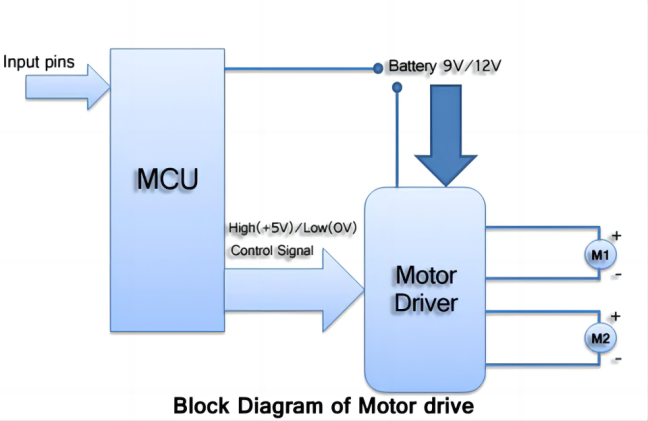
- Controller:
This is typically a microcontroller or microprocessor that generates low-power control signals for the driver. It produces logic outputs like PWM and direction commands. - Motor Driver IC:
This integrated circuit contains the power electronics like MOSFETs and amplifiers that handle the high currents and voltages for driving the motor. It serves as the power interface between the controller and the motor. - Motor:
Brushed DC motors, brushless DC motors, and stepper motors are some common types interfaced with drivers. Each has unique control requirements. - Power Supply:
Provides the necessary input voltage and current for operating the driver circuitry and motor. Needs to match driver and motor requirements. - Passive Components:
Additional capacitors, resistors, and inductors help filter noise, shape signals and protect components from surges. - Communication:
Many modern drivers provide communication interfaces like SPI or CAN bus to receive commands and return diagnostic data. - Protection Features:
Overcurrent, overtemperature and fault detection features prevent damage and enhance reliability.
Understanding how these components interact is key to designing and operating high-performance motor control systems with smooth speed regulation and torque delivery. The driver circuit serves as the workhorse between input controls and motor outputs.
How Does a Motor Driver Work?
A motor driver plays a crucial role as a bridge between the microcontroller and the motor. Its purpose is to receive control signals from the microcontroller and enhance them to ensure the motor operates smoothly and efficiently.

Inside the driver, power transistors are configured in an H-bridge arrangement. This H-bridge allows voltage and current to be steered bi-directionally to the motor windings by selectively switching the transistors on and off.
The microcontroller sends logic-level signals to the driver that cause the H-bridge transistors to switch on and off in patterns that determine the motor direction and speed. For example, to rotate clockwise, the driver will activate high-side and low-side transistors to allow current to flow through the motor windings in one direction. Reversing the switching pattern reverses current flow and rotation.
In addition to the H-bridge power transistors, motor drivers also contain voltage regulation, PWM generation, braking, current sensing, and protection components. These additional components help condition the power delivered to the motor, monitor motor operation, and prevent damage.
The power transistors, often MOSFETs or IGBTs, are the core of the driver, allowing it to take low-power control signals and amplify them to properly drive motor coils. Also, the driver electronics serve as a seamless bridge between digital controls and real-world power delivery.
Common Motor Driver Board Types
1.AC Motor Controllers:
These electronic devices are designed to control AC induction motors found in variable-speed applications like fans, pumps, and conveyors. They work by modifying the input AC power through adjustment of voltage and frequency to the motor drives to regulate speed and torque. Key specifications include power levels, input/output voltages, operating modes, and communication interfaces.
2.DC Motor Controllers:
The masters of motor manipulation. These ingenious devices are the wizards behind the scenes, effortlessly controlling both brushed and brushless DC motors. With their magical powers, they transform the ordinary DC input power into a mesmerizing pulsed DC output, all by skillfully modulating parameters like pulse width and frequency. This enchanting ability grants them the power to adjust the speed and torque of the motors with a mere flick of their digital wands. No wonder these mystical DC motor controllers are highly sought-after in the realms of electric vehicles, CNC machines, robotics, and other captivating motion control applications.
3.Servo Motor Controllers
Specialized controllers are used for precision position, velocity, and torque control of servo motors. Servo systems utilize closed-loop feedback for very accurate motion control. They are essential in applications like industrial automation, robotics, and CNC machines where precise motion is necessary. Both AC and DC-driven servo motors are used with matching controllers.
4.Stepper Motor Controllers:
Designed to control stepper motors by converting input power into discrete step pulses tailored to the motor. This open-loop approach allows precise position and speed control without encoders. Stepper motor controllers are widely used in 3D printers, CNC machines, and other motion applications that require reliable stepping action.
In addition to the many standard motor driver PCB boards available, JHDPCB also offers fully customized driver designs tailored to your specific application needs. Our team of engineers can design motor drivers optimized for your motor’s voltage, maximum current draw, power output, and other electrical characteristics. Whether you require a compact low-voltage driver or a high-power driver for large industrial motors, JHDPCB has the expertise to design and manufacture a driver PCB that matches your requirements. Our assembly and testing capabilities also allow drivers to be delivered fully populated and ready for installation. By leveraging JHDPCB’s custom design services, you can obtain a motor driver circuit board that provides ideal performance, safety, and reliability for your unique motor application.
Different Types of Motor Drivers
1.L293D IC
The L293D IC is a popular motor driver that can control two DC motors simultaneously. It can be interfaced between the microcontroller and the motor, making it easy to control the motor’s speed and direction. The IC has built-in protection circuitry that prevents damage to the motor and the driver. The L293D IC is commonly used in robotics, toy cars, and other hobbyist projects.
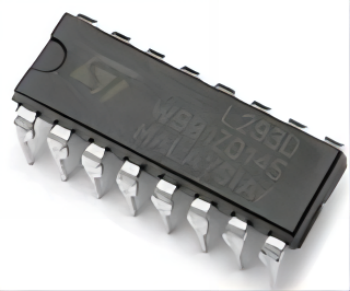
2.BTS7960B Motor Driver Board
The BTS7960B motor driver board is another popular choice for DC motor control. It can be interfaced with a microcontroller and controls the motor’s speed and direction based on a PWM signal. This driver board can handle high current and voltage ratings, making it suitable for industrial applications. It is commonly used in electric vehicles, drones, and other high-performance applications.
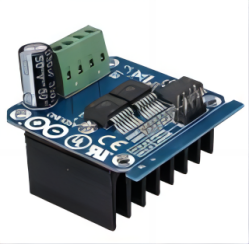
3.TB6612FNG Motor Driver Board
Introducing the TB6612FNG Motor Driver Board – your ultimate solution for seamlessly controlling two DC motors with a constant current of 1.2A. Equipped with two input signals, namely IN1 and IN2, this board offers you the flexibility to operate your motor in any of the four function modes – clockwise (CW), counter-clockwise (CCW), short-brake, or stop. With its unrivaled performance and reliability, the TB6612FNG Motor Driver Board is the epitome of professionalism in motor control technology. This driver board is commonly used in small robots, toys, and other hobbyist projects.
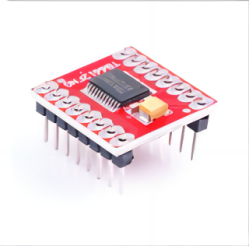
4.TB6560 Motor Driver Board
The TB6560 driver board is designed for CNC machines and other high-performance applications. It can control a single stepper motor and has input signal high-speed optocoupler isolation to ensure good heat dissipation. It also has a semi-flow mode adjustable stepper motor driver that can handle a variety of semi-flow models and current settings.
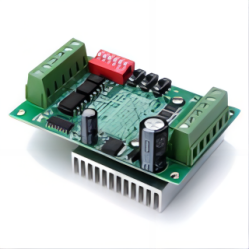
5.PCA9685 16 Channel Servo Motor Driver Board
The PCA9685 16-channel servo motor driver board is a highly adaptable motor driver, capable of seamlessly controlling up to 16 servos through the efficient utilization of just two pins via I2C communication. Its compatibility with popular microcontrollers such as Arduino and Raspberry Pi renders it an exceptional option for the pursuit of various hobbyist endeavors. This driver board is commonly used in robotics, drones, and other projects that require precise servo control.
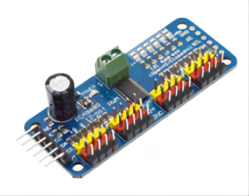
6.MACH3 Interface Board CNC 5 Axis
The MACH3 interface board CNC 5 axis is a motor driver board designed for CNC machines. The cutting-edge driver board boasts the capability to seamlessly accommodate up to five-axis stepper motor driver controllers, rendering it fully compatible with esteemed CNC software such as MACH3, Linux CNC (EMC2), and other parallel-control CNC software. Ensuring utmost computer security, this remarkable driver board features an independent USB power supply and peripherals power phase, effectively safeguarding your valuable data.
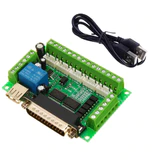
7.TB6600 Stepper Motor Driver
The TB6600 stepper motor driver is a cutting-edge device that bestows precise control over the speed and direction of stepper motors. It has a wide range of power inputs and can handle a power supply of 9~42VDC. The driver board’s micro-step and output current can be set with a 6 DIP switch, making it easy to customize for different applications.
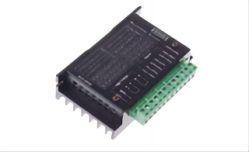
8.PWM DC Motor Speed Controller
The PWM DC motor speed controller is a simple motor driver that can control DC motor speed using a PWM signal. With an onboard potentiometer that effortlessly modifies the duty cycle of the PWM signal, enabling seamless adjustment of motor speed. This ingenious board possesses the remarkable ability to handle loads ranging from 9V to 50V, while effortlessly managing power up to an impressive 500W.
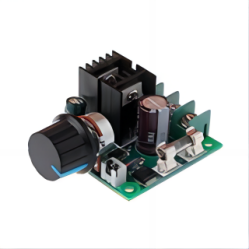
9.2000W 220V AC Motor Speed Control Board
It is a revolutionary SCR-based speed controller designed specifically for AC motors. This intelligent device not only empowers you to effortlessly regulate the speed of your AC motors, but it also boasts the remarkable ability to effectively manage other AC loads such as fans, bulbs, and heaters. With its advanced technology and impeccable performance, this control board is the ultimate solution for professional motor speed control and seamless management of various AC devices. This driver board can handle loads of up to 2000W, making it suitable for industrial applications.
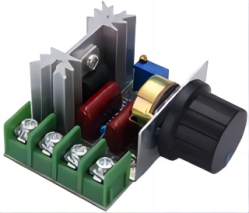
10.L298 Motor Driver Board
The versatile L298 motor driver board offers seamless control over two DC motors, allowing precise adjustments to both speed and direction. This exceptional device seamlessly interfaces with an array of microcontrollers, including the renowned Arduino, Raspberry Pi, and ESP32. This driver board has a 12V input voltage that can be used to drive the motors and a 5V onboard voltage regulator.
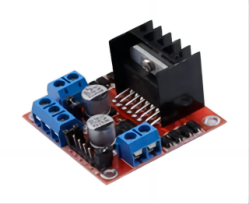
11.A4988 Stepper Motor Driver
The A4988 stepper motor driver revolutionizes micro-stepping by ingeniously energizing the coils with intermediate current levels, thereby unlocking the potential for precise intermediate step locations. With unparalleled efficiency, this driver effortlessly controls the stepper motor using a mere two pins from the controller. One pin expertly governs the rotation direction, while the other skillfully orchestrates the steps. This driver board is commonly used in 3D printers, CNC machines, and other robotics applications.
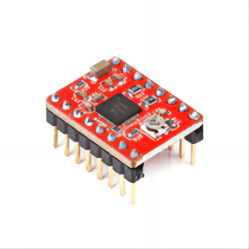
How to Control a DC Motor?
There are two main techniques used to control the speed and direction of DC motors – PWM (pulse width modulation) and H-bridge circuits.
Method 1: PWM – To Control Speed
PWM allows variable speed control of a DC motor by rapidly pulsing the power supplied to the motor. By increasing the duty cycle, or the percentage of time the power is on versus off, the more average power is supplied to the motor and it speeds up. Shorter duty cycles provide less power and slow the motor down. PWM creates an adjustable analog-like output pin from a digital signal.
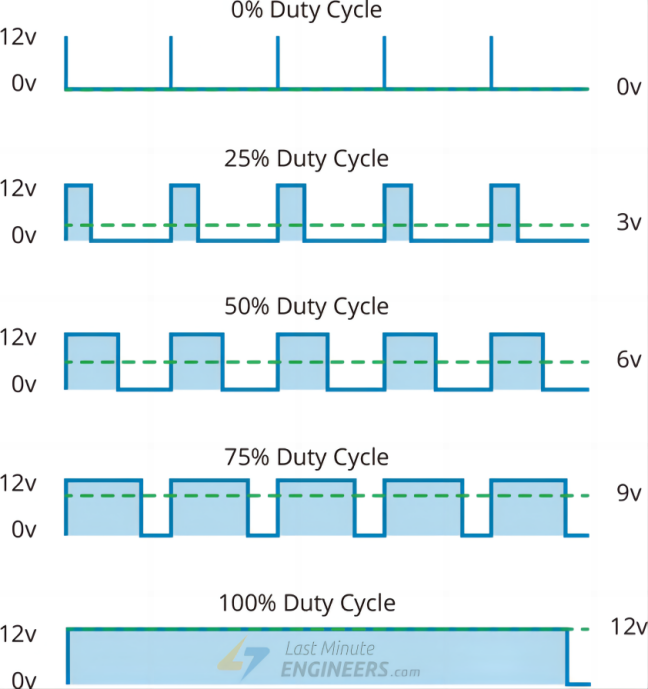
Method 2: H-Bridge – To Control the Spinning Direction
DC motors are natively unidirectional, but their rotation can be reversed by changing the polarity of the voltage applied to their terminals. This direction control can be achieved using a circuit called an H-bridge.
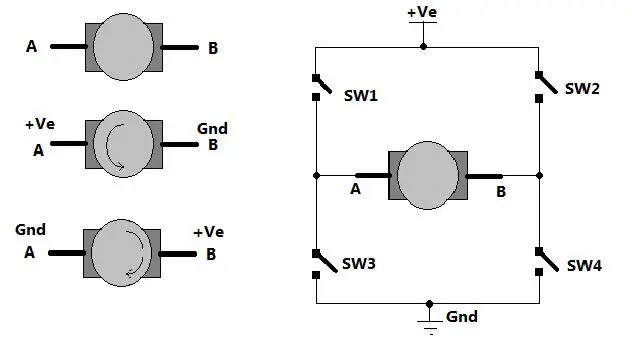
An H-bridge contains four switching elements arranged in the shape of the letter ‘H’, with the motor connected between the poles. The switches are commonly implemented using transistors. By activating the switches on the left or right side of the H, the motor supply voltage polarity can be reversed, thus reversing rotation.
For example, turning on the top left and bottom right switches allows current to flow through the motor in one direction, spinning it clockwise. Activating the bottom left and top right switches reverses the current, reversing the motor direction. The center switches are turned off to prevent short circuits when reversing.
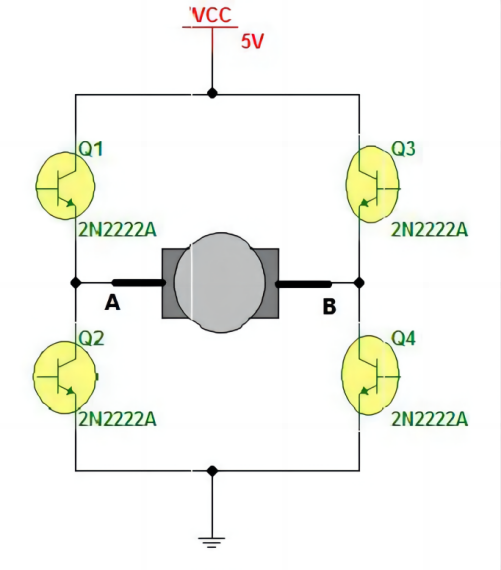
Using an H-bridge gives digital control over motor direction. Only one switch pair is activated at a time, so the circuit electronically switches the polarity applied to the motor. This eliminates the need to manually swap wiring to change rotation.
By using transistors instead of mechanical switches, the bridge can be easily controlled by a microcontroller. The H-bridge provides bidirectional control vital for motorized robotics and mechatronic applications. Combined with PWM speed control, it allows complete control of DC motor direction and speed.
Overall, we can say PWM handles variable speed while H-bridges provide directional control. Used together, they enable complete control of DC motor speed and direction from digital signals with the help of driver ic like the L298N. This makes DC motors versatile actuators for robotics and other mechatronic systems.
Frequently Asked Questions About Motor Driver
What is a motor driver?
A motor driver is an electrical device that regulates and controls the speed, direction, and torque of a motor. It acts as an interface between the motor and controller or logic elements.
What are the different types of motor drivers?
Common types of motor drivers include H-bridge drivers, PWM drivers, stepper motor drivers, and servo motor drivers. Each has advantages for different motor control applications.
How does a motor driver work?
A motor driver takes a low-power control signal and converts it into a higher-power signal that can drive a motor. It controls factors like voltage, current, and polarity going to the motor.
What parameters need to be considered when selecting a motor driver?
Key parameters are motor type, voltage and current requirements, control interface type, power dissipation, and features like overcurrent protection.
What are some applications of motor drivers?
Motor drivers are used in robots, industrial machinery, 3D printers, electric vehicles, consumer appliances, and electronics like disc drives.
Motor drivers play a critical role in controlling the movement of various types of motors. Whether you’re working with DC motors, stepper motors, or servo motors, the right motor driver can make a significant difference in terms of precision, efficiency, and overall performance.
At JHDPCB, we understand the importance of using high-quality motor drivers in your projects. That’s why we offer a wide range of PCB assembly services, including motor driver PCB assembly, to help you get the most out of your motor control applications.
With our state-of-the-art equipment and experienced team of professionals, we’re committed to delivering top-quality PCB assemblies that meet your exact specifications. Whether you need a single prototype or a large-scale production run, we have the expertise and resources to help you achieve your goals.
If you’re in search of a trustworthy ally to handle your motor driver PCB assembly requirements, your quest ends here at JHDPCB. Reach out to us without delay to delve deeper into our exceptional services and discover how we can elevate your motor control projects to unprecedented heights.

